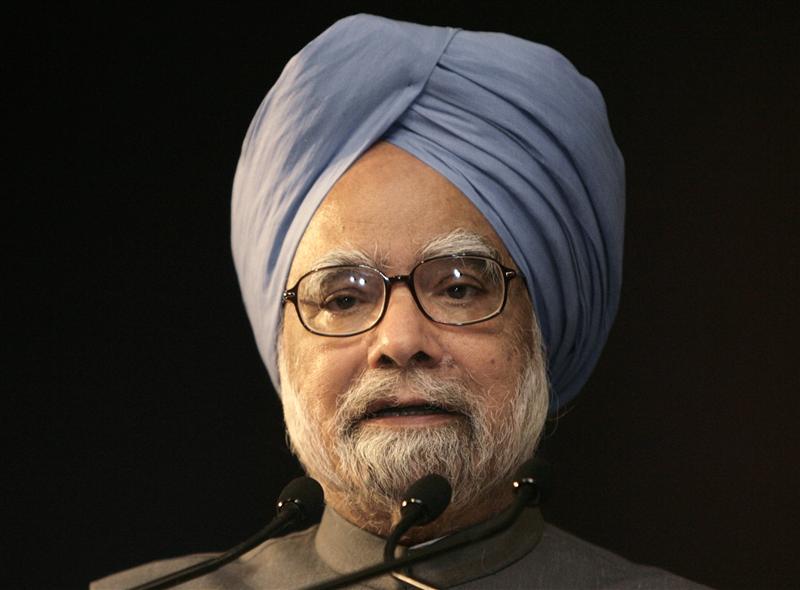
The Central Statistics Office (CSO) has declared the economic growth, as measured by the growth in gross domestic product (GDP), for the period October to December 2015. During the period India grew by 7.3%.
The economic growth for the period July to September 2015 has also been revised to 7.7%, against the earlier 7.4%. The economic growth for the period April to June 2015 was also revised to 7.6%, against the earlier 7%.
The CSO also said that the “growth in GDP during 2015-16 is estimated at 7.6 per cent as compared to the growth rate of 7.2 per cent in 2014-15”.
The question to ask here is that why doesn’t it feel like India is growing at greater than 7%? Before I answer this question let me reproduce a paragraph from author and economic commentator Satyajit Das’ new book The Age of Stagnation: “In a 2007 conversation disclosed by WikiLeaks, Chinese premier Li Keqiang told the US ambassador that GDP statistics were ‘for reference only’. Li preferred to focus on electricity consumption, the volume of rail cargo, and the amount of loans disbursed.”
This was promptly dubbed as the Li Keqiang index, by the China watchers.
Over the years, lot of doubts have been raised about the official Chinese economic growth data. And many analysts now like to look at high speed economic indicators to figure out the ‘actual’ state of the Chinese economy.
The Indian GDP data also seems to have reached a stage where it is ‘for reference only’. And we probably now need our own version of the Li Keqiang index, to figure out how different the actual economic growth is from the official number.
It is worth understanding here that GDP ultimately is a theoretical construct. One look at the high speed economic indicators clearly tells us that India cannot be growing at greater than 7%.
Let’s first take a look at the data points that constitute the Li Keqiang index. The electricity requirement for the period April to December 2015 has gone up by only 2.5% to 8,37,958 million Kwh, in comparison to the period between April to December 2014.
How does the earlier electricity requirement data look? The electricity requirement between April to December 2014 had gone up by 8.3% to 8,16,848 Kwh, in comparison to the period April to December 2013. What this clearly tells us is that the demand for electricity has gone up by a very low 2.6% during the course of this financial year, in comparison to 8.3% a year earlier. This is a clear indicator of lack of growth in industrial demand. As industrial demand picks up, demand for electricity also has to pick up.
And how about railway freight? Between April to December 2015, revenue earning railway freight grew by 1% to 8,16,710 thousand tonnes, in comparison to April to December 2014. Between April to December 2014, revenue earning railway freight had grown by 5% to 8,08,570 thousand tonnes, in comparison to April to December 2013.
The railways transports coal, pig iron and finished steel, iron ore, cement, petroleum etc. A slow growth in railway freight is another great indicator of lack of industrial demand.
This brings us to the third economic indicator in the Li Keqiang index, which is the amount of bank loans disbursed, an indicator of both consumer as well as industrial demand. The bank loan growth for the period December 2014 to December 2015 stood at 9.2%. Between December 2013 to December 2014 the loan growth had stood at a more or less similar 9.5%. Bank loan growth has been in single digits for quite some time now. In fact, growth in loans given to industries stood at 5.3% between December 2014 and December 2015.
And what is worrying is that bad loans of banks have jumped up. Bad loans of banks stood at 5.1% of total advances as on September 30, 2015, having jumped from 4.6% as on March 31, 2015. The stressed loans of public sector banks as on September 30, 2015, stood at 14.2% of the total loans.
Hence, for every Rs 100 of loans given by public sector banks, Rs 14.2 has either been declared to be a bad loan or has been restructured. In March 2015, the stressed assets were at 13.15%.
Estimates suggest that over the last few years nearly 40% of restructured loans have gone bad. This clearly means that banks have been using this route to kick the bad loan can down the road. It also means that many restructured loans will go bad in the time to come.
Hence, the Indian economic growth story is looking ‘really’ weak when we look at the economic indicators in the Li Keqiang index. There are other high frequency economic indicators which tell us clearly that economic growth continues to be weak.
Exports have been falling for 13 months in a row. Between April and December 2015, exports fell by 18% to $196.6 billion. Non petroleum exports between April and December 2015 were down by 9.4% to $173.3 billion. The bigger point is that is how can the economy grow at greater than 7%, when the exports have fallen by 18%? In 2011-2012, exports grew by 21% to $303.7 billion. The GDP growth for that year was 6.5%. How does one explain this dichotomy?
Between April and December 2015, two wheeler sales went up by 1.05% to 1.42 crore, in comparison to a year earlier. Two-wheeler sales are an excellent indicator of consumer demand throughout the country. And given that the growth has been just 1.05%, it is a very clear indicator of overall consumer demand remaining weak.
In fact, the rural urban disconnect is clearly visible here. Motorcycle sales are down by 2.3% to 97.61 lakhs. Scooter sales are up 11.5% to 39 lakhs. Scooters are more of an urban product than a rural one. This is a clear indicator of weak consumer economic demand in rural and semi-urban parts of the country. Tractor sales fell by 13.1% between April to December 2015 to 4.12 lakh. This is another indicator of the bad state of rural consumer demand.
One data point which has looked robust is the new car sales data. New car sales during the period April to December 2015, grew by 7.9% to 19.22 lakhs, in comparison to a year earlier. Between April to December 2014, new car sales had grown by 3.6% to 17.82 lakhs. The pickup in new car sales is a good indicator of robust consumer demand in urban areas.
Over and above this, not surprisingly, corporate earnings continue to remain dismal. If all the data that I have pointed up until now was positive, corporate earnings would have also been good.
The larger point is that if so many high frequency economic indicators are not in a good state, how is the economy growing at greater than 7% and how is it expected to grow by 7.6% during the course of this year. What is creating economic growth?
It is worth pointing out here that sometime early last year, the CSO moved to a new method of calculating the GDP. Since then robust economic growth numbers have been coming out, though the performance of high frequency economic indicators continues to remain bad. In fact, some economists have measured the economic growth rate between April and September 2015, as per the old method, and come to the conclusion that the growth is in the range of 5-5.2%, which sounds a little more believable.
To conclude, there is no way the Indian economy can possibly be growing at greater than 7%. Honestly, Indian economic growth data now seems to have gone the Chinese way—it’s totally unbelievable. And since we like to compete with the Chinese, at least on one count we are getting closer to them.
And there is more to come on this front in the time to come.
Stay tuned!
The column was originally published on the Vivek Kaul Diary on February 9, 2016


